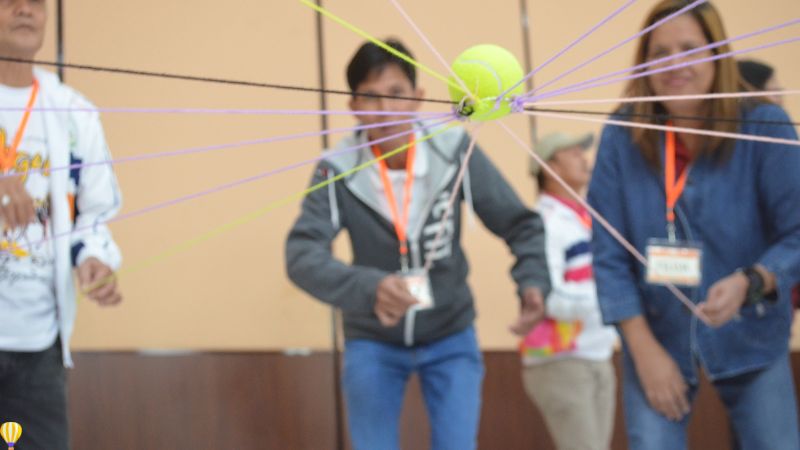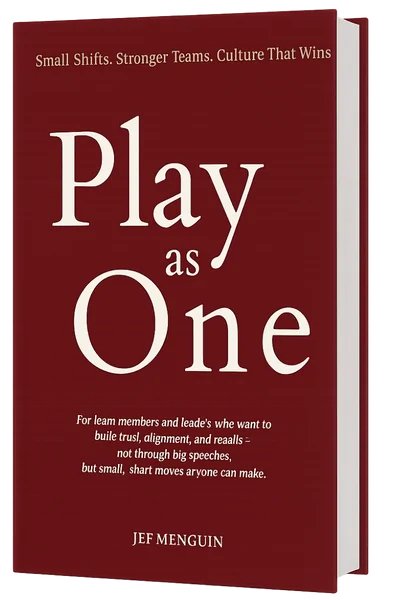The energy in the room was electric.
A company in Makati had just finished a day of team building. People laughed, high-fived, and even hugged. For the first time in months, colleagues felt connected. Managers were relieved—finally, people were smiling and engaged.
But three weeks later, when I checked in with the HR head, her tone had shifted.
“They loved the program,” she said. “But honestly? It feels like nothing’s changed. Meetings are the same. People are polite but silent. Mistakes still get buried. The excitement faded.”
This story is not unique. I’ve seen it countless times. Teams go through a fun and even meaningful program, but once they return to the office, the old patterns creep back in. The problem isn’t the event—it’s what happens after.
That’s why at Team Bayanihan, we never end with the last game or the final debrief. We continue the journey through 30/60/90 projects—structured commitments that extend learning into action, and action into culture.
In this article, I’ll show you:
- Why most team building programs fade without follow-through.
- What 30/60/90 projects are, and why they work.
- The science behind sustained change.
- How to design and implement projects effectively.
- Stories from the field, pitfalls to avoid, and FAQs.
By the end, you’ll see why 30/60/90 projects are the secret ingredient to lasting transformation.
Why Team Building Fades Without Follow-Through
Team building is often treated like a booster shot. You inject energy, people get hyped, and everyone feels good. But without reinforcement, the effect wears off.
Psychologists have studied this for over a century. Hermann Ebbinghaus discovered the forgetting curve—without reinforcement, people forget up to 70% of new information within a week. The same applies to behaviors. Unless we repeat and practice, old habits return.
There’s also the principle of hedonic adaptation: people quickly return to their baseline after positive experiences. That means the “high” of team building fades unless anchored to new practices.
And then there’s the workplace itself. Pressures pile up. Deadlines loom. Managers get busy. Unless new behaviors are embedded into daily work, they disappear under the weight of old routines.
This is why so many companies say, “We’ve done team building, but nothing changed.”
The truth is, most facilitators stop at the event. They deliver activities, spark reflection, and leave. But real transformation needs more.
That’s where 30/60/90 projects come in.
What Are 30/60/90 Projects?
30/60/90 projects are structured commitments—personal and team-based—that extend learning for three months after the program. They focus on practicing vital behaviors identified before and during the team building.
Here’s how they work:
- Personal Projects – Each participant commits to one specific behavior to practice. Example: “Speak up at least once in every meeting.”
- Team Projects – The group commits to one collective practice. Example: “Celebrate small wins every Friday.”
The timeline:
- 30 days: Quick wins. People test new behaviors, build confidence, and report first results.
- 60 days: Adjustment. Teams review progress, troubleshoot challenges, and reinforce behaviors.
- 90 days: Integration. Lessons are reflected upon, successes celebrated, and behaviors embedded into culture.
Here’s a table to make it clear:
| Timeline | Focus | Example (Personal) | Example (Team) |
|---|---|---|---|
| 30 days | Quick wins & practice | Speak up at least once per meeting | Weekly “celebrate small wins” huddle |
| 60 days | Adjustment & reinforcement | Admit mistakes within 24 hours | Mid-project review to check accountability |
| 90 days | Integration & reflection | Offer help without being asked | Public “commitment wall” review |
This simple framework makes change visible, structured, and sustainable.
The Psychology Behind 30/60/90
30/60/90 isn’t just a gimmick—it’s grounded in behavioral and organizational science.
- The Spacing Effect (Ebbinghaus): Spaced repetition improves retention. Revisiting commitments at 30, 60, and 90 days strengthens memory and habits.
- BJ Fogg’s Behavior Model: Behaviors stick when motivation, ability, and prompts align. 30/60/90 projects create motivation (commitments), ability (manageable steps), and prompts (nudges).
- Cialdini’s Principle of Consistency: Public commitments make people more likely to follow through. Declaring projects at the end of team building leverages this principle.
- Thaler & Sunstein (Nudge Theory): Small reminders—like weekly emails—help sustain focus.
- Charles Duhigg & James Clear: Habit loops form when behaviors are practiced consistently over weeks and months. 30/60/90 ensures enough time for habits to form.
- Kotter’s 90-Day Cycles: Organizational change research shows 90 days is an effective window for embedding new practices.
Even organizational culture experts like Edgar Schein emphasize that culture changes through repeated daily behaviors, not speeches.
In short: science says reinforcement works. 30/60/90 projects make reinforcement practical.
How to Design Effective 30/60/90 Projects
Designing these projects isn’t complicated, but it requires intention. Here are the steps we follow in Team Bayanihan:
1. Identify Vital Behaviors First
Projects must be tied to clear, observable behaviors. Without this link, they become vague and ineffective.
Example: Instead of “be more collaborative,” define “ask at least one clarifying question before rejecting an idea.”
2. Make Projects Visible
What gets seen gets done. Projects should be visible to the team—posted on walls, tracked on dashboards, or shared in meetings. Visibility builds accountability.
3. Empower Managers as Reinforcers
If managers don’t care, projects die. Their role is to model behaviors, check progress, and celebrate wins. In our programs, we tell managers: “Your people can only rise to the level of your example.”
4. Balance Personal and Team Projects
Personal projects build individual responsibility. Team projects create shared rituals. Together, they shift both mindset and culture.
5. Embed Nudges and Reminders
Weekly email nudges, short prompts, or posters keep behaviors top of mind. BJ Fogg calls prompts the “hidden driver” of behavior change.
With these steps, 30/60/90 projects move from theory to practice.
Stories from the Field
I’ve seen the power of 30/60/90 projects transform teams across industries.
- A BPO team in Cebu committed to a personal behavior: speaking up at least once per meeting. At 30 days, most were still hesitant. At 60 days, confidence grew. At 90 days, meetings had become lively, and innovation increased.
- A school staff in Pampanga chose a team project: offering help before being asked. Teachers began stepping into each other’s classrooms when needed. Students noticed the difference—there was more unity and care.
- A corporate team in Manila committed to admitting mistakes within 24 hours. At first, it was uncomfortable. But as people practiced, fear decreased. By 90 days, client complaints had dropped because issues were resolved faster.
These stories show that small, consistent behaviors—reinforced over 90 days—create big cultural shifts.
I’ve written about similar practices in my books Culture That Sticks, Play As One, and Team First. The principle is the same: change lasts when people own it and practice it together.
Common Pitfalls and How to Avoid Them
Not all 30/60/90 projects succeed. Here are common pitfalls and how to avoid them:
| Pitfall | Why It Happens | Fix |
|---|---|---|
| Overloading behaviors | Too many commitments | Focus on 2–3 vital behaviors only |
| Managers not involved | Delegated to HR only | Involve leaders in modeling & check-ins |
| No visibility | Commitments hidden | Use walls, dashboards, or team rituals |
| Treated as compliance | People feel forced | Encourage self-chosen, meaningful projects |
The biggest mistake? Treating 30/60/90 as a task list. The goal isn’t compliance—it’s culture.
FAQs
Why 30/60/90 and not 7/21/100?
30/60/90 aligns with research on habit formation and organizational change cycles. It’s long enough to form habits, but structured enough to keep focus.
How do we track projects effectively?
Through visible boards, digital dashboards, and regular check-ins. What’s tracked publicly is more likely to get done.
What if people fail their 30-day goals?
That’s normal. The 60-day check is for adjustments. Failure is feedback, not the end.
Can this work in remote teams?
Yes. Use digital boards, Slack/Teams channels, and virtual check-ins. The principles are the same.
How do we adapt 30/60/90 for larger organizations?
Start with pilot teams, then scale. Culture shifts best when modeled by smaller groups before spreading.
The Bayanihan Difference
Here’s what makes Team Bayanihan different.
Most facilitators stop at the event. They deliver activities, entertain the group, and leave. Teams feel good, but the high fades.
We don’t stop there. We design experiences with sustainment built in. We use 30/60/90 projects, manager engagement, and nudges to ensure behaviors stick.
And we ground it in Filipino values:
- Bayanihan (lifting together) → team projects.
- Malasakit (deep care) → personal commitments.
- Pakikipagkapwa (shared humanity) → collective responsibility.
This blend of behavioral science and cultural wisdom is what makes the Bayanihan Way unique.
Sustaining the Shift
The company in Makati that started with a fun program but saw no change? When they adopted 30/60/90 projects the following year, everything shifted.
At 30 days, people celebrated small wins. At 60 days, managers noticed real changes in meetings. At 90 days, the HR head called me with a smile in her voice:
“This time, the changes lasted.”
That’s the power of 30/60/90.
Team building doesn’t end when the games stop. It continues through commitments, nudges, and visible behaviors practiced over time.
If you’re ready to design a team building program where change doesn’t fade but grows stronger, explore our Team Bayanihan Workshops.
Let’s make sure your next team building isn’t just a fun day out—it’s the start of a lasting transformation.



